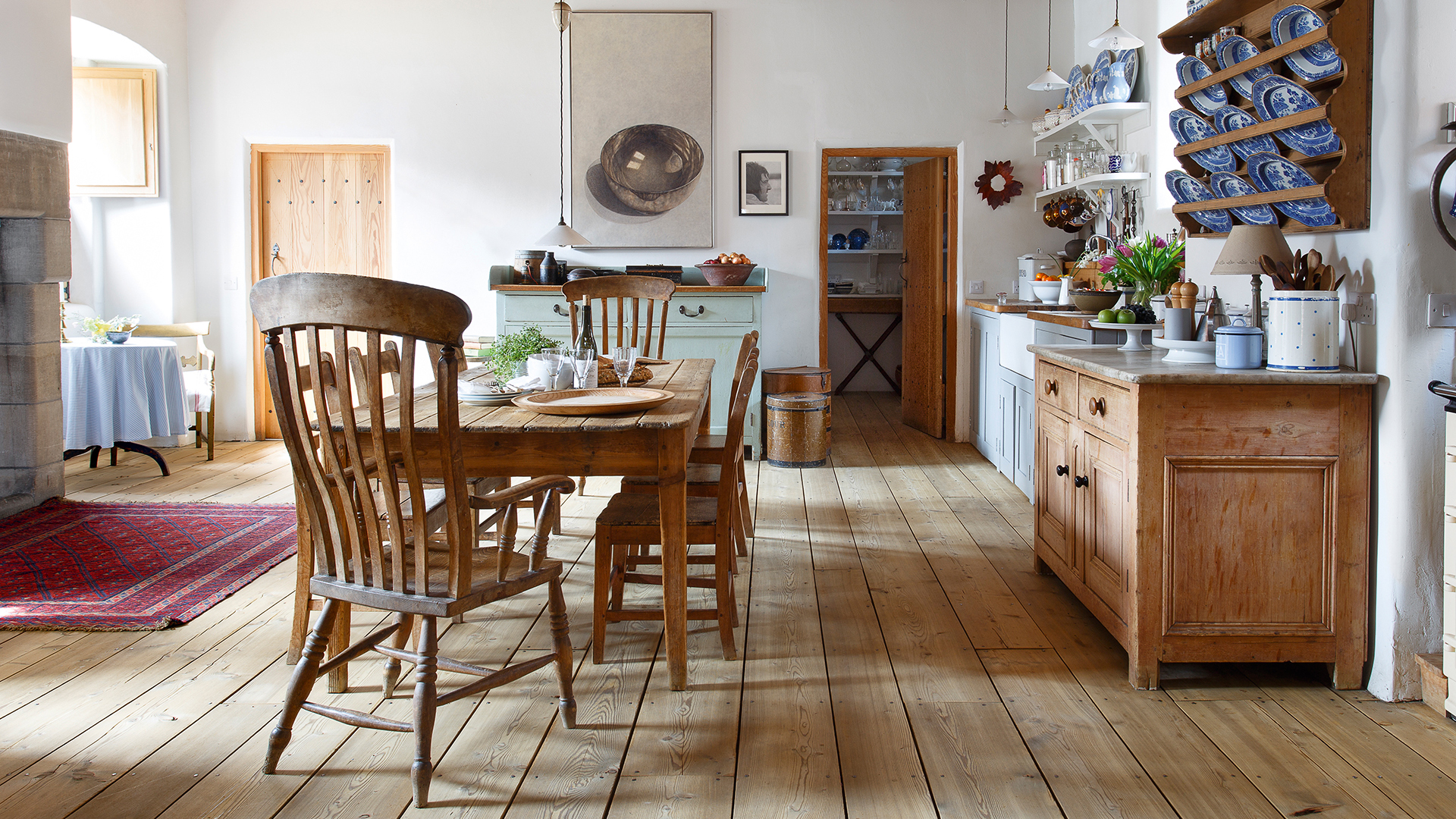
Engineered hardwood floors bring a natural beauty to our homes and although they are man-made they still need to be cleaned and protected in a similar fashion to natural hardwood.
Our experts say you need to be mopping for a deeper clean, but in a way that continues to protect the surface from scratches and de-coloring.
The best vacuums for hardwood floors only do part of the job so our pros share which cleaning solutions are safe, how to choose the right mop for the job, and their tips to clean your engineered floors as thoroughly as possible.
The best way to clean engineered hardwood floors
1. Vacuum the floor
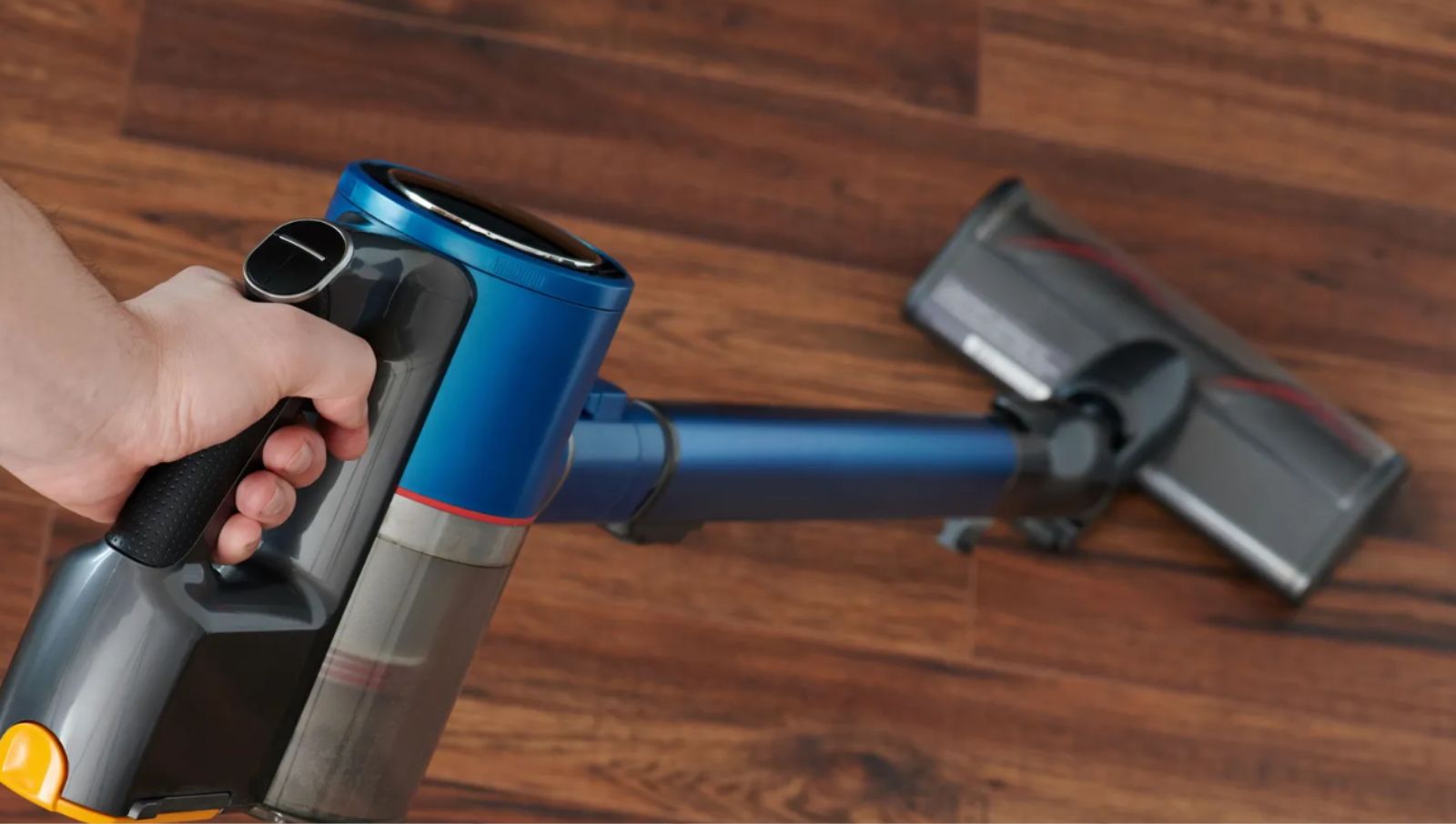
'Start with removing dirt and debris by sweeping or vacuuming,' explains Taylor Riley, cleaning veteran and founder of Boom FSA. 'I recommend using a soft brush attachment or microfiber broom to help prevent scratches.'
Vacuums like the Shark Detect Pro Cordless and the Dyson V12 Detect Slim use soft brushrolls for this exact reason - and they work like a charm on wooden floors.
If your vacuum is a bit more rugged, and you're not currently in the market for an upgrade, a broom with a microfiber head will also do the job while protecting your floors. This dual-sided mop from O-Cedar at Walmart is a stand-out option as you can use it for the sweeping and the mopping.
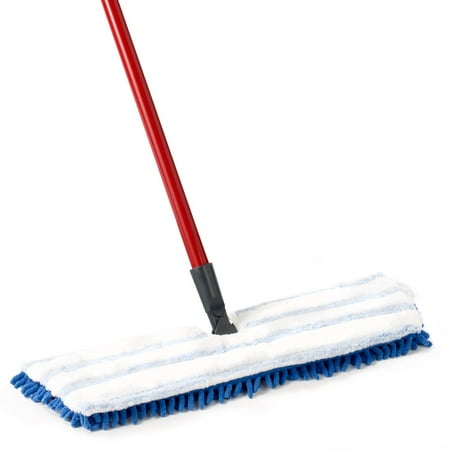
Cleaning your engineered hardwood floors involves sweeping and mopping – and this can do both. It's a worthy upgrade for both wet and dry cleaning, using microfiber that's safe on hardwood floors.
2. Choose the right cleaner
Hardwood, like many natural surfaces, can become affected or even damaged by the wrong cleaning solution. And although it's built differently, the same goes for engineered hardwood as there's still a layer of genuine hardwood on the surface.
'After removing dust and dirt, mop the floor with a microfiber mop lightly dampened with a pH-neutral cleaner specifically formulated for hardwood,' Taylor advises. pH-neutral cleaners minimize potential damage and will avoid discoloring your engineered hardwood floor.
'To avoid damage, it’s crucial to never use acidic cleaners like vinegar or ammonia, as they can strip away the finish and dull the floors over time.'
'From personal experience, I recommend Bona Hardwood Floor Cleaner. It’s a trusted, pH-neutral option that dries quickly without leaving streaks or residue,' Taylor says, adding that the hardwood-safe cleaner is available in bulk for when you need to stock up.
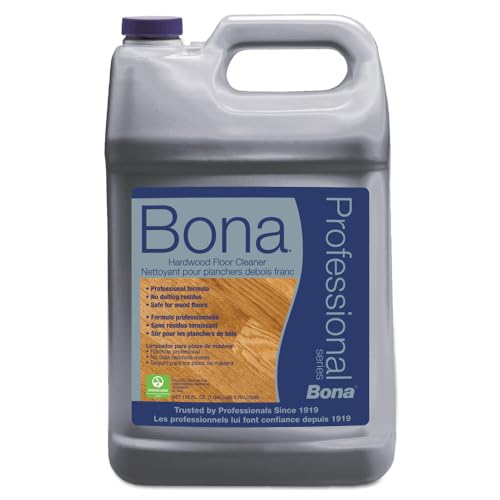
This isn't the first time a cleaning expert has recommended us the Bona Hardwood Cleaner.
3. Grab your mop
When it comes to the best mop for engineered hardwood flooring, there isn't a one-size-fits-all. The O-Cedar dual-action mop linked above is a great choice, but you could improve your cleaning further with something a bit more
Steam mops, particularly on untreated hardwood, can cause more damage than it's worth due to the high heat and excessive moisture, so it's best to avoid those.
Generally, string mops are cheap and effective, but they're not the best choice for wooden floors. They absorb moisture quite heavily, which is what you're trying to avoid when cleaning wood.
Taylor recommends using a microfiber spray mop as it 'allows for better control over moisture.' You can also use the floor cleaner directly from the mop. The Panda Grip Microfiber Spray Mop is a top-rated choice and it comes with three washable and reusable pads.
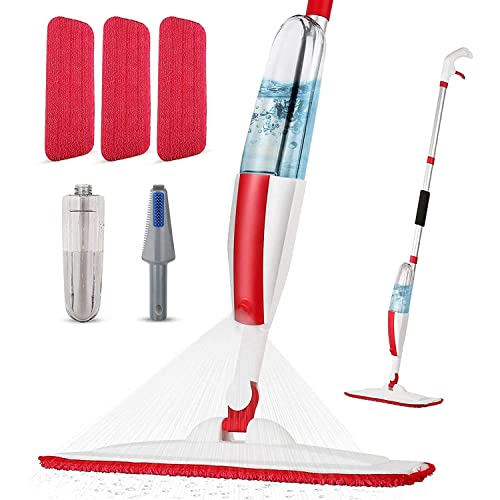
The Panda Grip Microfiber Spray Mop is the perfect choice, with a 360-degree swivelling head and microfiber pads that are safe for hardwood floors (and easily reusable).
Matthew Baratta, VP of operations at Daimer Industries, alternatively recommends a spin mop over other types. 'A spin mop works great for hardwood floors because it allows you to wring out excess water properly,' he mentions, as minimizing moisture levels is key.
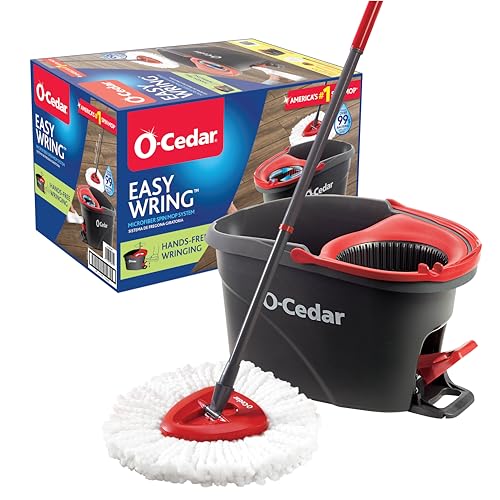
The benefit of a spin mop is precise control over moisture levels. Engineered hardwood can't handle too much water so a spin mop, which offers hands-free wringing, is the ideal choice.
4. Mop, the right way
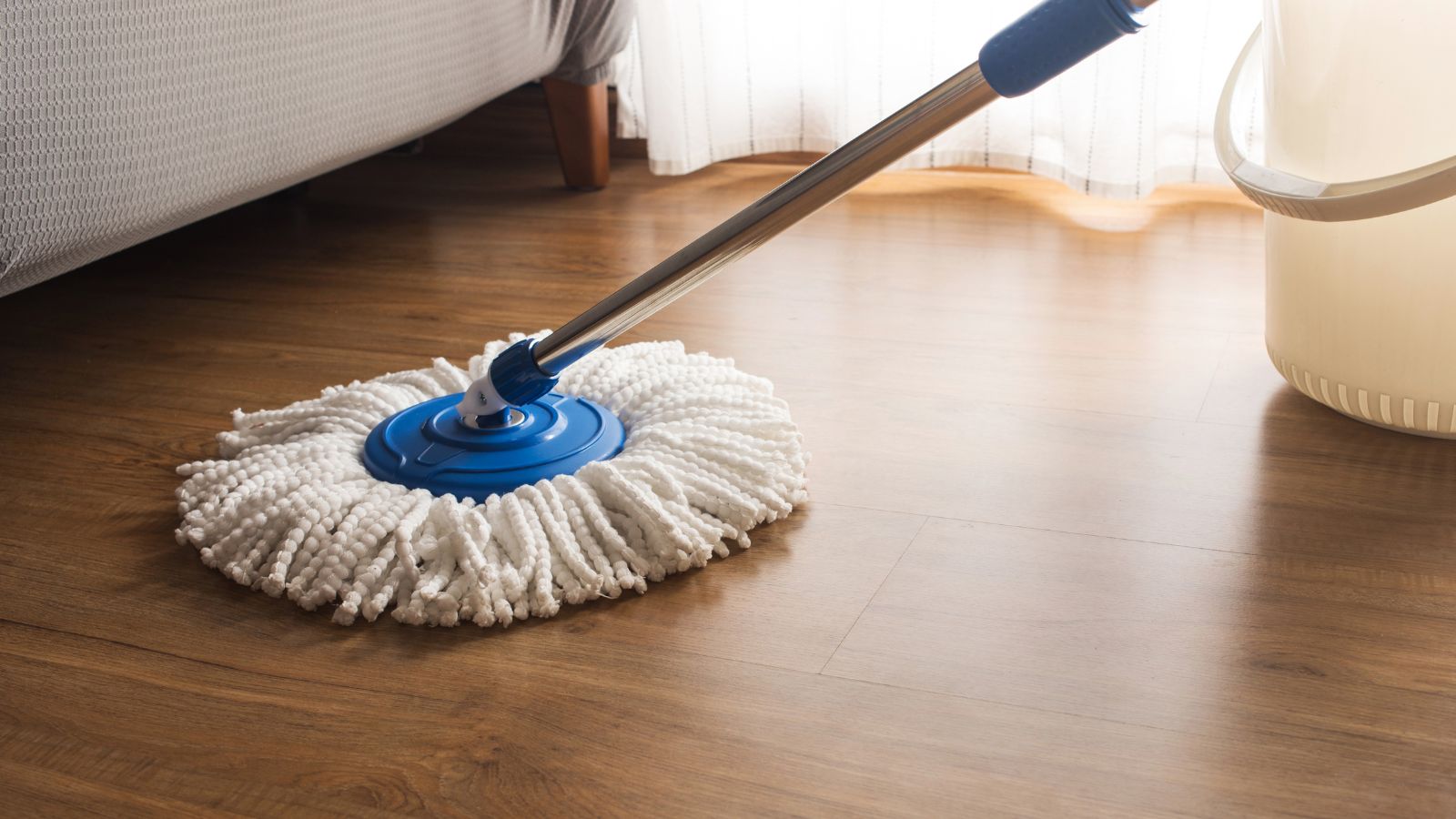
As emphasized above, you're looking to avoid excess moisture when mopping. If you remember anything from this guide, this is it.
'It’s important to avoid excess water. The mop should be damp, not wet, to prevent moisture from seeping into the floor,' warns Taylor. Water can easily penetrate hardwood's porous surface, causing swelling, cupping or staining. 'If any excess moisture remains, dry the floor with a clean microfiber cloth to avoid water damage.'
Matthew agrees, 'When mopping, ensure your mop is damp (not wet) and that the floor does not stay wet for long.' This is why it's so important to choose the right mop. Traditional string mops, while usually great at cleaning, can end up causing a great deal of damage to your precious floors.
Another helpful tip from Taylor: 'Clean in the direction of the wood grain to minimize streaks and ensure a smooth finish.'
Then, grab your mop and cleaner and mop your floors the right way and clean without streaks. The trick is to start from the edges and move towards the center to avoid missing any spots, and work in sections if you're covering a large area. And don't be too liberal with the cleaning solution, that can actually cause more streaks.
Next, find out how professional cleaners mop hardwood floors.







